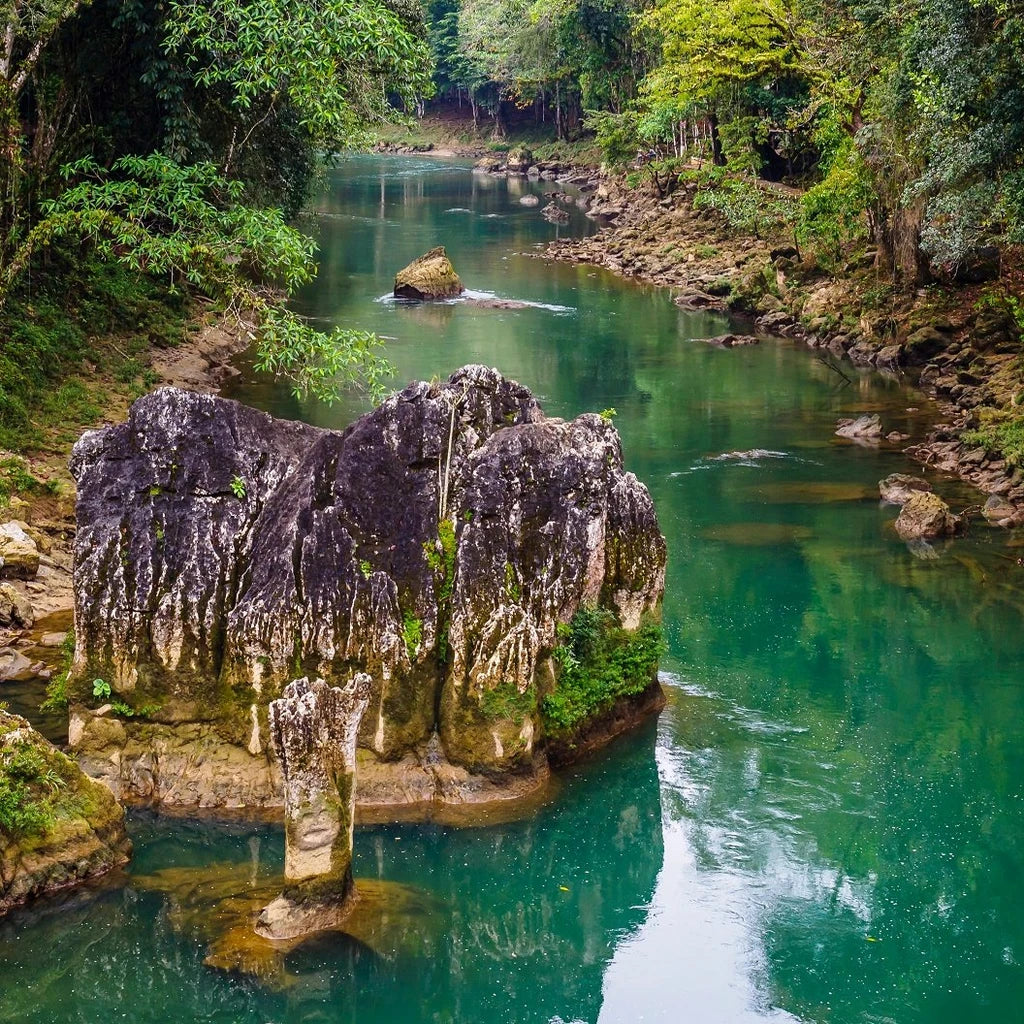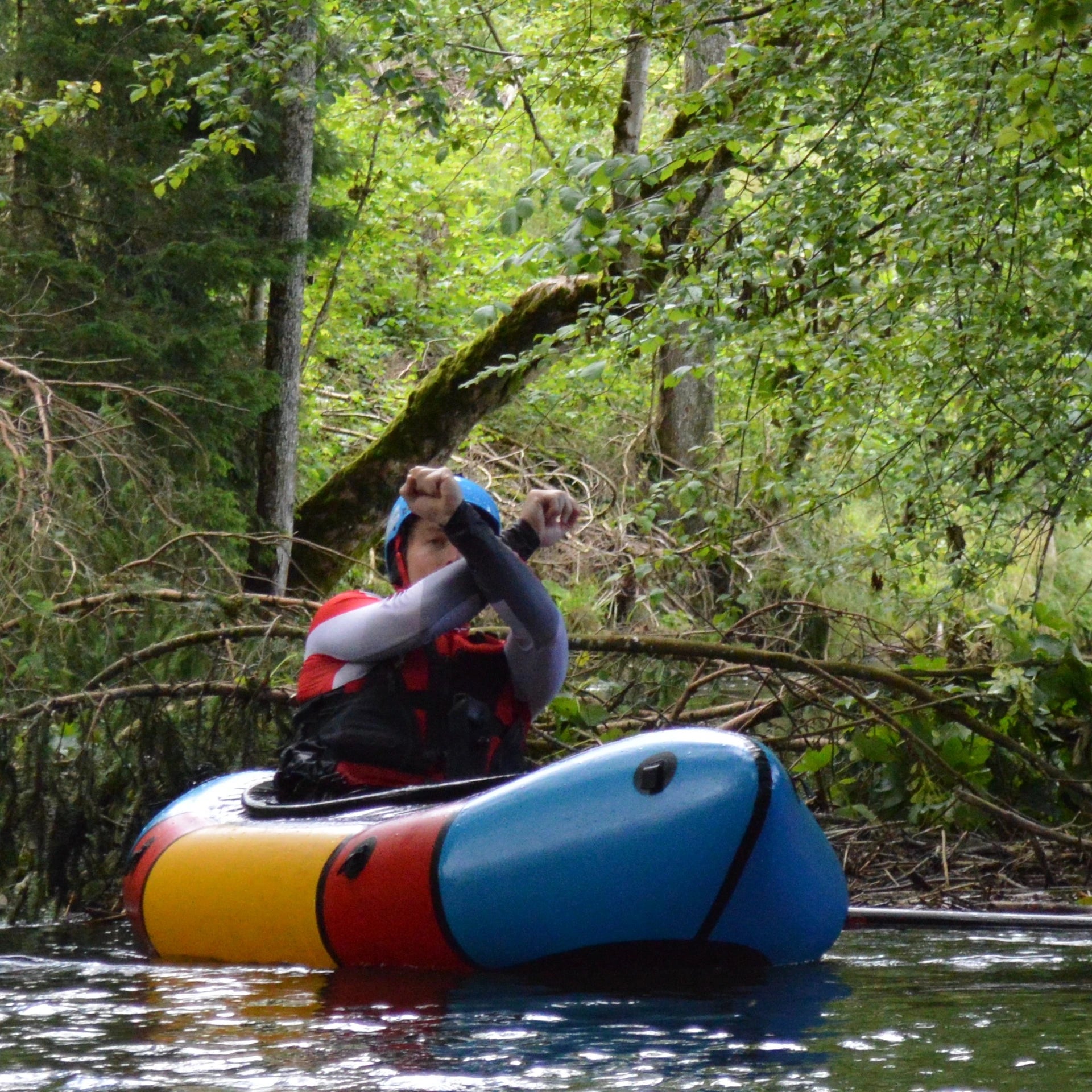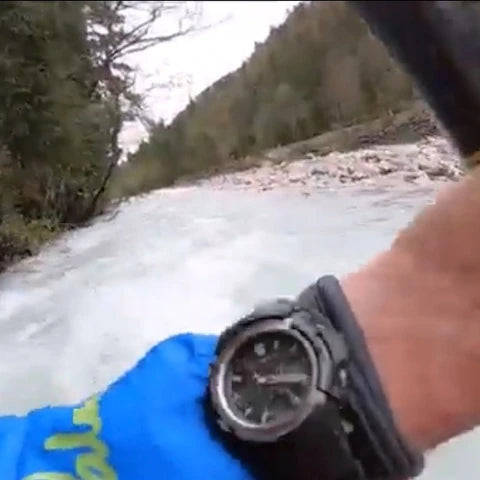Packraft abc
-

Equipment
The right equipment will make your paddling trip safe and enjoyable. The water temperature is crucial for the choice of clothing on the water. A life jacket should generally always be worn. If you have any questions about the equipment, please contact us.
-

Scouting
It is advisable to carry out an inspection of unknown rivers and difficult rapids. This means that dangers are identified early on and there are no unpleasant surprises. Please note that a river can have very different appearances depending on the water level and sometimes changes after floods. Scouting is therefore never a bad idea.
-

Chair paddling
Practice the most important maneuvers on land and prepare yourself mentally for an emergency in the water. You should especially practice getting out of the whitewater packrafts with spraydecks. A large leak in the air chamber also requires quick action. Be aware of dangers early on and therefore be safer on the road.
-

Denier
This silk industry numbering system is based on the old French unit denier. The denier unit is used to indicate the fineness of chemical fibers. The unit denier (den, formula symbol Td) is defined as follows: 1 den = 1 gram per 9000 meters
-

Spare parts
It never hurts to have a few patches, glue and Gerband tape with you. The latter works great as an emergency solution on the water so that you can continue the tour despite a leak. Commercially available, inexpensive tape often works better than expensive on-the-go patch products. We have many spare parts in stock and will be happy to advise you on repairs or additions.
-

Fin
A fin improves the directional stability of the packraft and the effectiveness of the paddling strokes. A fin is a nice addition, especially on calm water. It can be removed at any time and is lightweight.
-

Gradient
The gradient is a suitable indicator of the flow speed of a river. Specialist literature and internet portals usually indicate the gradient. The following applies here: The more water a river carries, the greater the flow speed, given the same gradient. The gradient is given in percent.
-

Flood
Especially for the small rivers in the low mountain ranges, often only a greatly increased water level offers the chance of a worthwhile journey. However, paddling during or after floods requires special caution. Expect woodiness and other objects in the murky water.
-

Internal storage system
An ISS significantly increases the possible luggage volume. We recommend it for longer expeditions. We are happy to advise you on the advantages and disadvantages of the system.
-

Anyone
Different types of packraft make it easy to combine your sport and adapt it to your personal preferences. Packrafting is a hobby for everyone! We hope to show you and inspire you even more options through our contributions and personal advice.
-

Eddies
They are our natural friend in the water! Learn to recognize the eddies and approach them specifically. Here the current runs in the opposite direction to the direction of flow of the water. In the eddy there is time to take a breath and prepare for the upcoming sections of the river. In addition, eddies are ideal places for getting in and out of the packraft.
-

Length
Your leg length should be the deciding factor when choosing the packraft length. To do this, measure from your rump to your heels while sitting. We would be happy to advise you on this too.
-

Fellow paddlers
Paddling in groups of at least three people increases fun and safety. If possible, discuss the order and tasks within the group as well as signs on the water in advance.
-

Nature conservation
We all love the beauty of nature and want to preserve it. Find out about traffic rules and protect the bank areas! Our waters are the basis of life and biodiversity, which we want to protect for our children and future generations.
-

Order
There has to be order! You should be particularly careful when packing your equipment for your paddling trip so as not to forget anything. We even use checklists here now, because there is nothing more annoying than standing on the river in great weather and dream water levels and realizing that important pieces of equipment are missing.
-

Pump
A small hand pump is a convenient way to avoid blowing with your mouth. In addition, higher pressure can usually be achieved. However, caution is advised in summer. When the packrafts are removed from the water, air should be released.
-

Q (scientific symbol for flow/outflow)
In hydrology, discharge or flow indicates the volume of water that leaves a given catchment area under the effect of gravity within a certain time. It is often used as a measure to determine the amount of water in a river section and is given alternatively or together with the level (cm). The usual information for the whitewater class refers to an average flow/level.
-

Recirculation
Learn to recognize a recirculation, because this is where one of the greatest dangers lurks in our great sport. Recircs do not only occur in whitewater, but often also on regulated rivers behind weirs, steps or downslope brakes.
-

Safety course
Taking a course is fun and increases safety for everyone on the water. Even experienced paddlers can learn a lot here and train in a practical way.
-

Thermoplastic polyurethane (TPU)
TPU is a particularly tear-resistant and elastic plastic membrane compound. It combines the properties of its soft and harder components and is resistant to abrasion and most chemicals.
-

Portage
When in doubt, portaging is always the right decision and with the super light packrafts it also requires little effort. The pre-installed handles on the Current-Raft models make every portage even more pleasant.
-

Lead angle
In flowing water and white water, it is important to know where the current is and to align the packraft accordingly. Of course, a trained eye and experience help here, also with regard to the choice of line. As a basic rule, the bow should not be positioned at a 90 degree angle to the current or waves.
-

Wind
Due to their design, packrafts are quite cumbersome in headwinds. This can even be dangerous when paddling on the coast (e.g. Bora in Croatia). Be aware of the wind situation and maybe even take advantage of it with the help of a wind sail.
-

X (signal with arms)
If you receive this signal from someone, be careful. It means: Stop! Get out immediately! Danger! Don't drive any further! The symbol X is also often used as a symbol for “need help”. It is shown by crossing both arms over the head. Get to know this and the other most important signals before you go out on the water and always discuss the signals in the group before paddling.
-

YouTube
Online videos, preferably with level information, are a great source of information for planning your trips. In addition, you can find a lot of useful information about packrafting in general and safety on the water on YouTube.
-

Time management
Set yourself realistic milestones and leave enough time for the unexpected, because in the dark all packrafts are gray. On standing water you can plan at a speed of 3 to a maximum of 5km/h. In whitewater you should allow enough extra time for scouting, portages and play spots.

























